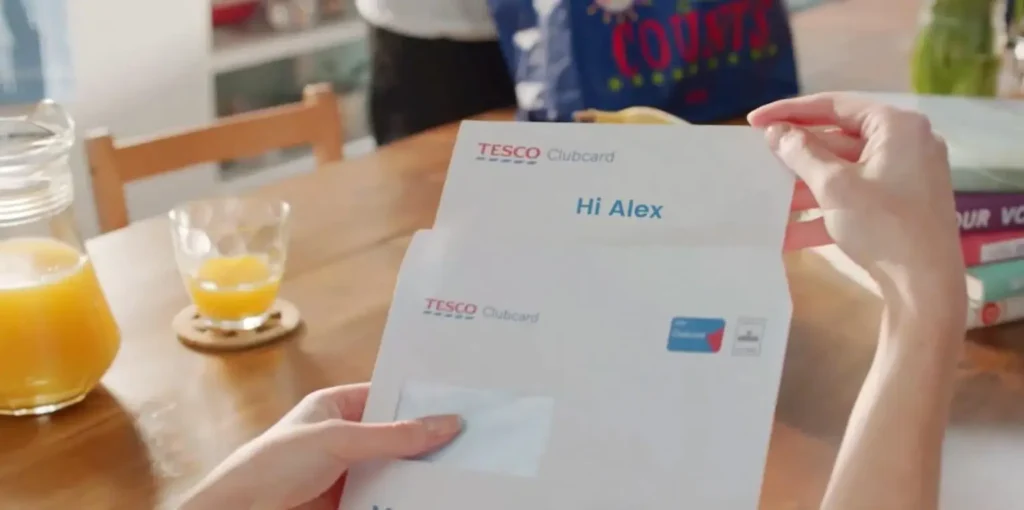Customer engagement is a key driver of business success — and it’s significantly driven by psychological and behavioral aspects of human interaction. That’s why leading companies are increasingly using behavioral psychology principles to design products and services that boost customer satisfaction and build lasting relationships.
By understanding the importance of concepts like social proof, scarcity and emotion, businesses can create engagement strategies that truly connect with their target audience.
Key Insights You Should Know
Any marketing executive should be up to date with the latest market research data on customer engagement, but you probably don’t have time to scour the internet for stats. So we did that for you. Here are some core insights you need to know.
- Customer experience is key: 45.9% of businesses cite customer experience as their top priority for the next 5 years.
- Customer feedback drives improvement: 77% of consumers view brands more favorably if they proactively invite and accept customer feedback.
- Emotions influence brand loyalty: Emotionally engaged customers have a 306% higher lifetime value and are 71% more likely to recommend a brand than non-engaged customers.
- Personalization drives engagement: 80% of consumers are more likely to buy from a brand that provides personalized experiences.
- Think omnichannel: Companies with the strongest omnichannel customer engagement strategies retain an average of 89% of their customers, compared to 33% for companies with weak omnichannel strategies.
- Social media matters for brand perception: 71% of consumers who have had a positive experience with a brand on social media are likely to recommend the brand to others.
- Customer loyalty programs boost retention: 70% of U.S. consumers are loyal to brands that offer loyalty programs or rewards.
- Retention is more cost effective than acquisition: Increasing customer retention rates by 5% increases profits by 25% to 95%.
Customer-centric experiences that inspire loyalty are more important than ever. And creating them requires listening to customer feedback, tailoring your content and offering to their needs and being present where your customers are across channels.
To make informed decisions that drive customer engagement, you need to understand your audience. One way to take a closer look at the inner workings of your audience? Psychographic segmentation.
Psychographic Segmentation: Who Are Your Customers?
Psychographic segmentation is a mouthful, but don’t let it deter you. It just refers to identifying specific factors about your audience that can help you better understand their psychological and behavioral drivers.
These factors cover everything from a customer’s personality to their hopes and dreams. The main categories include the following.
- Personality traits: Openness, conscientiousness, extraversion, agreeableness and neuroticism (OCEAN) can influence brand preferences and engagement. For example, extraverted individuals may prefer socially engaging brands while conscientious consumers may value reliability and consistency.
- Lifestyle factors: Hobbies, interests and daily routines can reveal patterns in consumer behavior and preferences. Outdoor enthusiasts may engage with brands that promote adventure and sustainability while busy professionals might prioritize convenience and efficiency.
- Values and beliefs: Personal values can also shape attitudes towards brands and products. For instance, those who value tradition may prefer more established brands while more progressive consumers may engage more with socially responsible companies.
- Social status and aspirations: Finally, perceived social standing and desired self-image can influence brand engagement and loyalty. Aspirational consumers might engage with luxury or premium brands that symbolize success and prestige, while those who identify with a particular subculture may prefer niche or alternative brands.
Now how do you get all this data? Common sources include surveys, interviews and observational studies. As you gather more data, you gain a stronger understanding of your target audience’s motivations, preferences and decision-making processes. From there, you can craft targeted marketing strategies and relevant messaging that drive customer engagement, loyalty and — here’s the ultimate goal — advocacy.
Emotional Triggers in Customer Engagement
Customer behavior and engagement can also be influenced by emotional triggers. By strategically tapping into a particular emotional trigger, you can deliver a more compelling, personalized experience that resonates with your customers on a deep, emotional level.
Here are 6 emotional triggers, from fear (of missing out) to empathy, and how each of them can be used to enhance customer engagement.
1. Fear of Missing Out (FOMO)
You’ve heard of FOMO — it’s the fear of missing out that’s gained traction in the world of social media, where you see others doing something amazing or new and worry that if you don’t, you’ll be left behind.
Ultimately, FOMO taps into people’s innate desire to stay connected with their social group. Marketers can leverage it by creating a sense of urgency or scarcity. Time-limited offers, exclusive access or social proof indicators — for instance, “only 3 left in stock” or “1,000+ people viewed this item” — can convince customers to take action quickly.
2. Curiosity
As humans, we’re naturally curious, wired to seek out novel or unexpected experiences. By adding a little suspense or surprise to customer-facing content, you can pique curiosity and encourage further engagement.
Top marketing tactics that leverage this emotional trigger include:
- Sneak peeks
- Gamification
- Culture-jacking trending content in creative ways
- Personalized surprises
- Custom recap videos
These can all be great ways to surprise and delight your customers.
3. Credibility
You’ve probably heard this before, but trust matters. It’s the foundation of any relationship, so it shouldn’t surprise you that it’s pretty important in the customer relationship too.
Customers are more likely to engage with and remain loyal to brands they see as trustworthy and reliable. To build trust, leverage social proof (e.g., customer reviews, testimonials, expert endorsements), be transparent and consistently deliver.
4. Belonging
We humans have a fundamental need to feel like we belong. We want to feel that we’re connected to others who share similar values, interests or experiences. Why does this matter for brands?
By fostering a sense of community and shared identity among customers, your brand can create strong emotional bonds that drive engagement and loyalty. User-generated content campaigns, brand ambassador programs or exclusive member events can help customers feel like they are part of something bigger than themselves.
5. Growth
Just like when you got a gold star as a kid for doing your chores or a good grade in school, people are motivated by a sense of accomplishment. It makes us feel like there’s progress and personal growth. That’s powerful stuff.
You can tap into this emotion by helping your customers achieve their goals, learn new skills or overcome challenges (and rewarding them when they do). Personalized learning paths, progress tracking or gamified challenges all inspire a sense of achievement that keeps customers engaged and motivated.
6. Empathy
Customers are more likely to engage with brands that are empathetic to their needs. This shouldn’t surprise you, but have you acted on it?
By actively listening to customers, acknowledging their concerns and providing personalized support, you build an emotional connection that leads to trust (see above) and loyalty.
Proactive customer service or personalized messaging at a point of friction can show customers that your brand genuinely cares about their experience.
Post on
Having a deep understanding of your target audience’s needs, values and preferences is crucial here. By collecting and analyzing customer data, creating detailed personas and mapping out the customer journey, you’ll be able to identify key moments where emotional triggers can be used to create more impactful, personalized experiences.
On a related note, it’s important to use emotional triggers authentically and ethically, ensuring that they align with your brand’s values and deliver genuine value to your customers. When used strategically and responsibly, emotional triggers can be a powerful tool for driving customer engagement, loyalty and advocacy through emotionally charged marketing.
Impact of Personal Values on Customer Interaction
Personal values also significantly shape consumer behavior and engagement with brands.
Schwartz’s Universal Personal Values framework identifies 10 core values that go beyond cultural boundaries: self-direction, stimulation, hedonism, achievement, power, security, conformity, tradition, benevolence and universalism.
These values influence consumers’ needs, attitudes and evaluations of products and services. For instance, someone who prioritizes achievement may prefer brands that emphasize success and competence while a person who values security may favor reliable and safe offerings.
By aligning marketing messages and product attributes with customers’ personal values, you can create emotionally resonant experiences that foster strong connections and loyalty. This alignment enhances customer satisfaction and advocacy, with your customers seeing your brand as an extension of their identity and goals.
High-Impact Customer Engagement Strategies
Here are some expert-level customer engagement tactics that can make a huge impact:
- Personalized product recommendations: Use AI and machine learning algorithms to analyze customer data, such as browsing history, purchase history or demographics and provide highly targeted, personalized product suggestions across different touchpoints.
- Gamified loyalty programs: Create multi-tiered loyalty programs that incorporate game design elements such as points, leaderboards and challenges to motivate customers to engage more frequently and deeply. By tapping into the emotional triggers of achievement and competition, gamified loyalty programs can significantly boost customer retention and lifetime value.
- Interactive Video campaigns: Develop Interactive Videos that allow customers to make decisions and shape the narrative into a more personalized and memorable experience. Interactive Video has been found to convert at a rate of more than 11%, much higher than the 1% rate of banner ads, Google display ads and YouTube annotations.
- Augmented reality (AR) experiences: Leverage AR technology to create immersive experiences that blend the digital and physical worlds and allow customers to visualize and engage with products in a new way. For example, IKEA’s Place app uses AR to let customers see how furniture would look in their homes before making a purchase, reducing uncertainty and increasing confidence.
- User-generated content (UGC) campaigns: Encourage customers to create and share their own content (photos, videos, reviews) related to the brand. Then feature this content across marketing channels to build social proof, trust and emotional connection. UGC campaigns, such as GoPro’s Be a HERO Challenge, can boost engagement and reach while also offering insights into customer preferences and behaviors.
- Personalized email campaigns: Segment customers based on their behaviors, preferences and lifecycle stages, and send highly targeted, personalized messages via email to deliver the right content at the right time. Personalized emails have 29% higher open rates and 41% higher click-through rates than generic emails.
- Exclusive, limited-edition product launches: Create a sense of scarcity and urgency with special product releases. Offer early access or unique benefits to loyal customers or community members. This taps into the idea of social proof and FOMO to drive engagement and sales, as seen in the success of Supreme’s weekly product drops.
By implementing these tactics and campaigns, you can create powerful emotional connections with customers, drive long-term engagement and loyalty and ultimately achieve significant growth and profitability. The key is to continuously test, measure and optimize these strategies based on customer feedback and data-driven insights to ensure maximum impact and ROI.
Emotional Branding Strategies
Emotional branding strategies are essential for creating strong, lasting connections between brands and consumers. These involve appealing to customers’ feelings and desires, allowing brands to differentiate themselves in a competitive market and foster loyalty.
Here are some key emotional branding strategies — with real-world brand examples to illustrate them.
- Sensory branding: Engaging customers’ senses, whether that’s through iconic visuals, smells, sounds or more — can create powerful emotional associations with a brand. For example, the distinct scent of Abercrombie & Fitch stores or the sound of a Harley-Davidson motorcycle engine can both spark specific feelings and memories.
- Storytelling: Crafting interesting narratives that showcase a brand’s history, values and purpose can humanize the brand and create an emotional connection with customers. Take the “Impossible is Nothing” campaign by adidas, which features inspiring stories of athletes and taps into feelings of determination and perseverance.
- Cause branding: Aligning with a social or environmental cause can appeal to customers’ values and desire to make a positive impact. For instance, Patagonia’s commitment to sustainability and environmental activism resonates with consumers who prioritize eco-consciousness.
- Empowerment: Encouraging customers to express their individuality and creativity through a brand can foster a sense of ownership and emotional connection. Lego’s “Rebuild the World” campaign is a good example, as it celebrates children’s imagination and problem-solving skills, empowering them to create their own unique builds.
- Nostalgia: Evoking positive memories and feelings of the past often creates a strong emotional bond between customers and a brand. Coca-Cola’s “Share a Coke” campaign, featuring popular names and phrases on their bottles, is an iconic one, tapping into familiar feelings of friendship, family and shared experiences.
- Personalization: Tailoring brand experiences to customers’ individual situation and needs makes them feel valued and understood. Watch how American Express created a Personalized Video for each cardholder, thanking them for their loyalty and showing them how to get the most out of their card.
- Community building: Fostering a sense of community and shared identity among customers can also lead to strong emotional connections and brand advocacy. Harley-Davidson’s Harley Owners Group provides a platform for riders to connect, share experiences and participate in exclusive events, creating a tight-knit brand community.
To maximize the impact of emotional branding, be sure to keep things authentic, consistent and customer-centric across all touchpoints. By strategically leveraging these techniques and continuously refining your approach based on customer feedback and market trends, you too can create lasting emotional connections.
Personalized Video: Immersive CX Amplifier
Video is an incredible medium for customer engagement due to its ability to capture attention, convey emotion and deliver information in a highly engaging and memorable way. And when you combine video with personalization — the art of leveraging data to create a truly unique experience for an individual — you’ve got a powerful tool on your hands.
Personalized Video speaks directly to the viewer, allowing you to connect 1:1 and make them feel seen and valued. It’s also the perfect format for emotional marketing. The video element is engaging and exciting through its combination of sounds, visuals and storytelling. Meanwhile, personalized details can appeal to emotional triggers like empathy, surprise and achievement.
Just take a look at this example from Southampton Football Club. To inspire fans to renew their season tickets, the recap video included 20 unique data points about the past season, from the number of matches they attended to their percentile to the number of goals they saw. Thrilling game footage was the cherry on top, igniting fans’ excitement for the new season.
Here are 7 reasons why video, and specifically Personalized Video, is an excellent solution for boosting customer engagement.
1. Attention-Grabbing
In today’s content-saturated digital landscape, video stands out as a dynamic and eye-catching medium that can quickly capture and hold viewers’ attention. With the average human attention span now shorter than that of a goldfish (around 8 seconds), video’s ability to immediately engage viewers is crucial for breaking through the noise and delivering impactful messages.
2. Emotional Connection
Video’s combination of visual, auditory and narrative elements makes it a uniquely effective tool for emotional marketing, helping brands forge deep, personal connections with viewers. By leveraging storytelling techniques, music and relatable characters or scenarios, video can tap into viewers’ empathy, aspirations and values and inspire a strong bond with the brand.
3. Information Retention
Research shows that viewers retain 95% of a message when they watch it in a video, compared to only 10% when reading it in text. Video’s multi-sensory nature engages multiple areas of the brain, leading to better comprehension and memory retention. This makes video ideal for conveying complex information or messages that stick with viewers long after they’ve watched.
4. Personalization at Scale
Advances in data analytics, AI and dynamic video generation now make it possible for businesses to create highly Personalized Video content at scale, for millions of viewers.
By incorporating data points such as name, location, browsing history or past purchases, you can now tailor video content to each individual viewer, delivering hyper-relevant messages that resonate on a deep, personal level. This level of personalization drives real results, as 80% of consumers are more likely to do business with a company that offers personalized experiences.
5. Increased Conversion and ROI
Personalized Videos have also been shown to significantly outperform generic videos in terms of engagement and conversion metrics.
For example, Personalized Video emails have a 16x higher click-to-open rate than non-personalized emails, and including a Personalized Video on a landing page can increase conversions by 80% to 300%. This translates to a higher return on investment (ROI), with brands able to effectively target and convert high-value prospects with tailored video content.
6. Omnichannel Integration
Personalized Videos can be seamlessly integrated into various touchpoints across the customer journey, from email and social media to websites and mobile apps. This omnichannel approach allows businesses to deliver a consistent, cohesive brand experience that engages customers at every stage of their journey, building trust and loyalty over time.
7. Customer Insights and Optimization
Personalized Video platforms often provide detailed analytics on viewer engagement, such as watch time, drop-off points and click-through rates. This data can be used to continuously refine and optimize video content, targeting and placement to maximize customer engagement and conversions.
By leveraging these insights, you can create a powerful cycle of personalization, where each interaction informs the next, leading to customer experiences that become more relevant and engaging over time.
To sum up, video’s unique ability to capture attention, evoke emotion and deliver memorable, personalized experiences makes it a powerful tool for customer engagement. By using Personalized Video across the customer journey, you too can forge deep, lasting connections with your audience, driving loyalty, advocacy and business growth.








